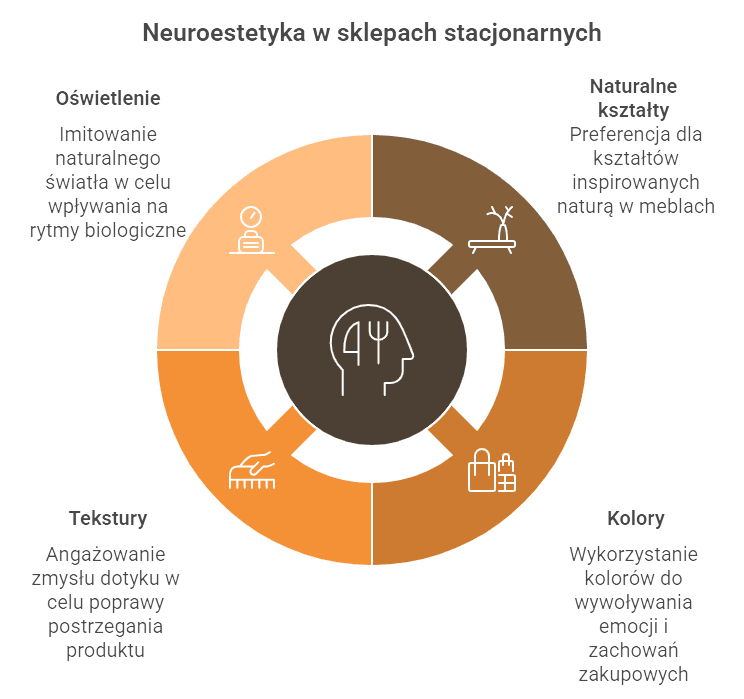08.05.2025
Retail space design is no longer solely about aesthetics and functionality – today, the process is also influenced by science based on human brain research. Neuroaesthetics, an interdisciplinary field combining neuroscience with design theory, is transforming the way we create retail furniture and fixtures in 2025.
Neuroaesthetics is an interdisciplinary scientific field that merges neurology, psychology, and aesthetics. Its goal is to understand the neurological mechanisms behind our perception of art and why certain works can deeply move the human psyche. These mechanisms shape our aesthetic experiences. The insights from this science can also provide practical guidelines for creating commercial spaces that evoke desirable emotions and purchasing behaviors in customers.

Research conducted in the 2020s increasingly supports the idea that the human brain prefers shapes commonly found in nature. The so-called golden ratio and fractal structures, which are prevalent in the natural world, appear to be favored by the human brain. This preference may be related to easier visual processing and a positive impact on a person’s psychophysiological state. Rounded corners on shelves or displays are not only safer but may also evoke more positive emotional responses compared to sharp edges. Customers tend to move intuitively through spaces that incorporate biomorphic shapes, similar to those found in nature.
In the Google flagship store located in the Chelsea district in New York City, designed according to the principles of neuroaesthetics, the furniture, including sofas and tables, features oval shapes. The furniture for this store was designed by Polish designer Daniel Michalik.
Neuroaesthetics can provide valuable insights into the optimal use of colors in commercial spaces.
Adobe’s 2025 research revealed that blue is the color that most strongly triggers the impulse to purchase, followed by black, gold, red, and silver.
Other studies highlight the benefits of using furniture colors that subtly contrast with the displayed products. Such contrast increases product visibility without overwhelming the customer’s visual system.
Touch is a sense often overlooked in store design, yet neuroaesthetic research emphasizes its crucial role. The brain processes tactile information in ways that can significantly influence how a product’s quality is perceived. Furniture with carefully selected textures encourages interaction, prolonging the customer’s engagement with the product. Soft upholstery, smooth wood, and delicate surfaces create a harmonious environment, inviting relaxation and comfort.
The interior of the aforementioned Google store was designed to make visitors feel as comfortable as they would at home. Seating areas, including benches, poufs, and stools, are available for both shoppers and those seeking advice or assistance.
Contemporary research in chronobiology and neuroaesthetics provides compelling evidence that lighting integrated into retail furniture, mimicking the natural fluctuations of daylight, can significantly affect the synchronization of customers’ internal biological clocks. Well-designed lighting systems not only optimize the perception of retail spaces but also regulate emotional states and consumer behavior by influencing neural pathways associated with visual stimulus processing and circadian rhythm regulation.
****
Neuroaesthetics in retail furniture design is not a passing trend but a long-term movement grounded in solid scientific foundations. Companies adopting these principles create retail spaces that resonate more strongly with customers, often on a subconscious level. In this way, retail furniture designed according to neuroaesthetic principles can genuinely influence purchasing behavior and customer loyalty.

02.05.2025
In the age of online shopping, physical stores must offer more than just products – they need to create memorable experiences. Biophilic design is one trend that has the potential to transform modern retail environments. But what exactly is it?

24.04.2025
March and April 2025 brought another series of Ergo Store productions for the More & More brand in Germany. This time, we worked in cities across Bavaria and Lower Saxony, including Augsburg and Rosenheim.